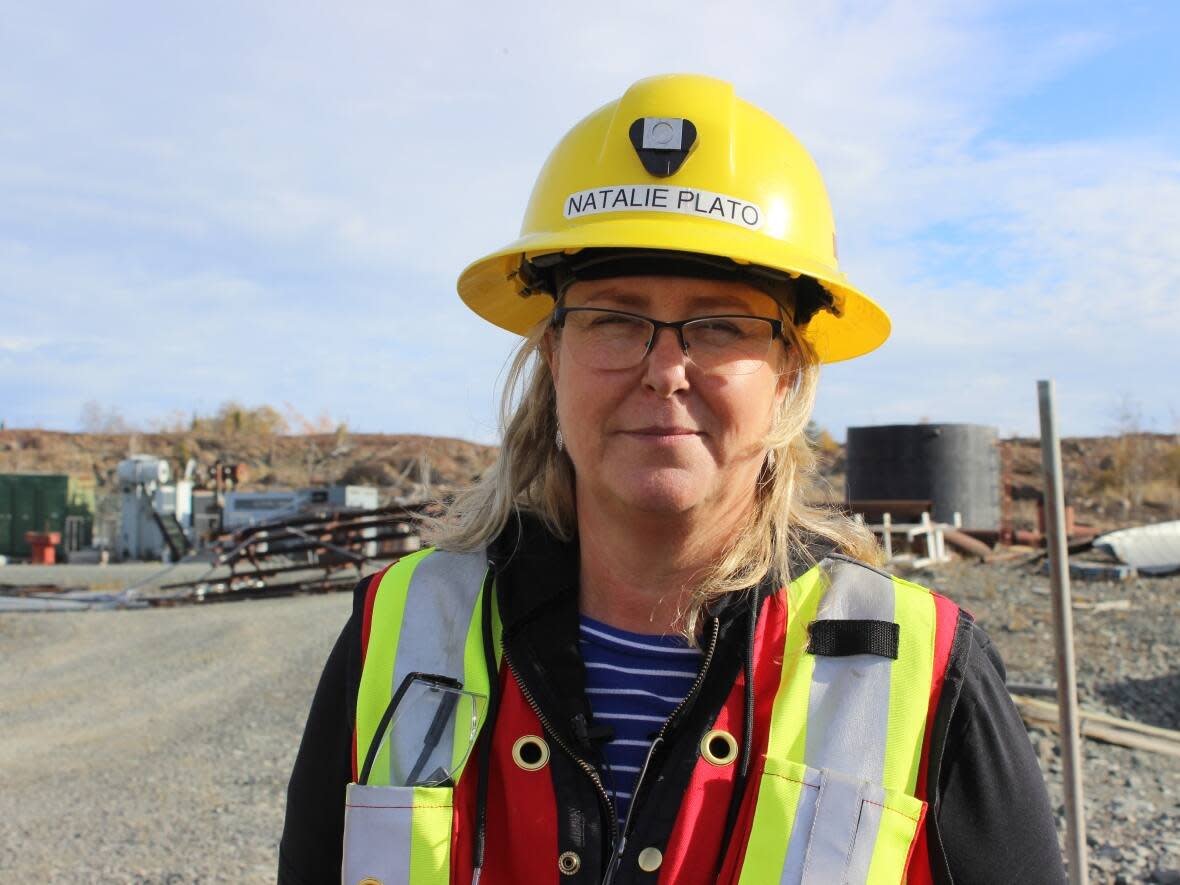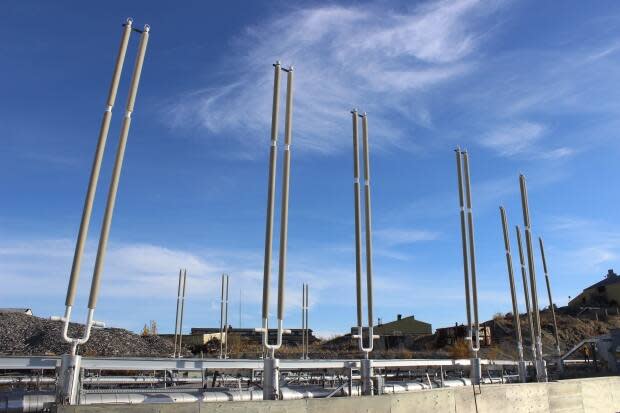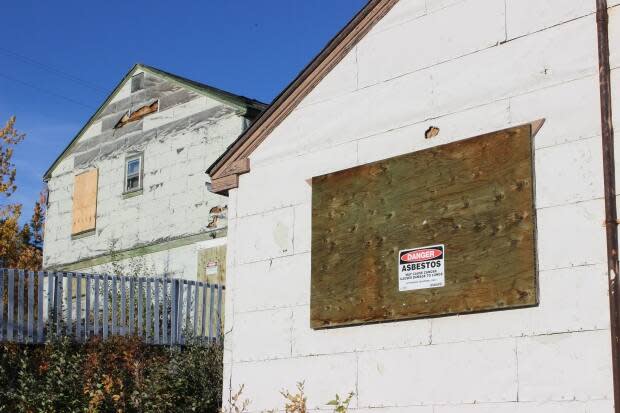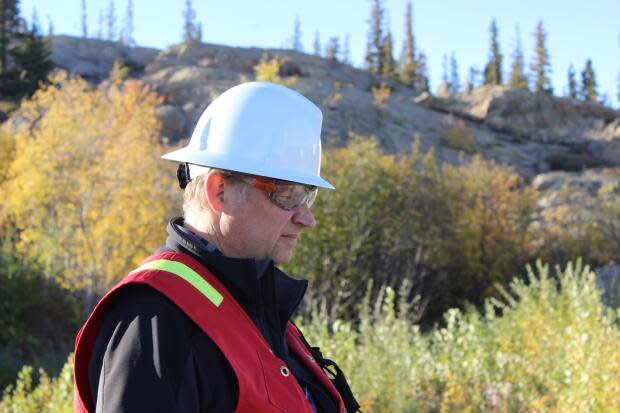This is what remediation at Giant Mine looks like. It's going to cost more than expected

A massive undertaking to remediate Giant Mine in Yellowknife is going to cost significantly more than expected.
The project's budget was pegged at nearly a billion dollars back in 2014, but on Wednesday, during the first media tour since remediation at the site began, officials said the figure had grown.
They wouldn't say by how much, however. Natalie Plato, the deputy director of the Giant Mine Remediation Project, said they'd unveil the new figure once it was approved by Canada's Treasury Board — something she expects to happen on Oct. 27.
The scope of the work has changed over the past eight years, explained Plato. The timeline to get it all done was also extended from 2031 to 2038.
Plato said some of the big changes since the last cost estimate have been forming the Giant Mine Oversight Board, launching a project to monitor health effects of arsenic exposure, and a decision to fill eight open pits with waste rock that were previously going to be left open.
When probed by a reporter that the new budget must be significantly higher, Plato responded: "you're on the right track."

Project officials want to extend the timeline, in part, to avoid any aggressive peaks in labour demand — and provide more opportunities for northern and Indigenous businesses. Since the federal government took over the site in 2005, $648 million have been spent on contractors — $313 million of which have gone to Indigenous contractors.
The remediation project's labour demand is expected to peak in 2031, with 260 full time jobs.
What's going on at the site?
Remediation officially began at Giant Mine in 2021.
The project team said it's continuing to stabilize extensive underground spaces by filling them with a mixture of tailings, cement and chemical additives. Plato said the paste is made on site and pumped underground through drill holes.
Brad Thompson, the regional project advisor for Public Service and Procurement Canada, said 40,000 cubic metres of material has been poured this year — and there's 400,000 cubic metres of empty space that needs to be filled, in all.
This work is of particular importance around the site's arsenic chambers — where 237,000 tonnes of highly toxic arsenic trioxide dust is being stored. The dangerous material will eventually be locked underground forever by "freezing" the rock around it with thermosiphons.

There are four spots where rows of thermosiphons will be installed. Plato said work has been done to prepare the first spot, dubbed Area 1, by blasting and levelling it. The space needs to be flat, she said, so that rigs can come in and drill holes for the technology.
Technically, rock can't be frozen — but the thermosiphons will cool it to -5 C. That way, if water ever gets close to the arsenic chambers, it will freeze, preventing the water from reaching the arsenic trioxide or carrying it anywhere.
Thompson described thermosiphons as a passive heat exchanger, which extract heat from the ground, and don't require electricity to operate.
The installation of 256 thermosiphons in Area 1 will begin in 2026. The entire Giant Mine site will need 858 thermosiphons in all.
A new water treatment plant
One of the constant responsibilities of the project team is to prevent the underground from flooding — so that water doesn't come into contact with the arsenic trioxide and threaten to carry it elsewhere.
Right now, water underground is pumped into the northwest tailings pond year round.

Every summer, water in the tailings pond is treated and discharged into Baker Creek, which flows into Yellowknife Bay. Rather than treat water three months per year, a new water treatment plant is being built that will treat water year round. Construction on that plant is set to begin in 2023, and is expected to be done by 2025.
Once it's up and running, the northwest tailings pond won't be needed to store contaminated water anymore — allowing the project team to start remediation work there.
Town site demolition pushed back
Yellowknife residents may have noticed that the old town site, which was going to be demolished this year, is still standing. Plato said the roughly 30 to 40 homes were "very full" of asbestos and work has begun to remove that material and put it in a special cell of a non-hazardous landfill that's being built. The buildings are now expected to come down in 2023.

The landfill will have the capacity to store 96,000 cubic metres of waste. A set of three cells next to it will be able to store 84,000 cubic metres of sludge from treating water.
Elsewhere on the site, the mine's infamous roaster, which spewed arsenic trioxide into the air without any pollution controls from 1949 to 1951, is stored in pieces, in bags, inside 265 sea cans.
Painstaking work to deconstruct the roaster complex spanned two summers, nearly 10 years ago, and involved shrouding the buildings in plastic to control the contaminants before taking them down.

Eventually, the material in the sea cans will be dumped into one of the pits, buried, and frozen. The containers, meanwhile, will go on to be cleaned and potentially sold to members of the public who've shown interest in them.
Thompson said people who look at the sea cans might see a lot of contaminated material, but what he sees is a success.
"We managed to take down one of the most contaminated buildings in Canada, no one was injured, no one was hurt, we did it safely and there were no arsenic exceedances, so we were happy about that."



